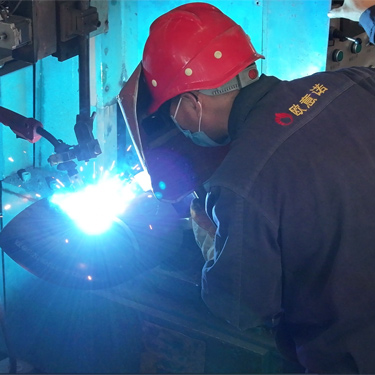
Nov . 23, 2024 16:58
Back to list
reducing station
Reducing Station A Key Component in Modern Fuel Management
In the realm of industrial processes, reducing stations play a pivotal role in optimizing energy use and ensuring the effective management of fuel sources. These stations are instrumental in the reduction, control, and distribution of gas or fluid flows, often serving various sectors including power generation, manufacturing, and urban infrastructure. Understanding their significance and functionality is essential for any industry reliant on gas-based energy systems or similar applications.
At its core, a reducing station is designed to decrease the pressure of gas or fluid from a higher level to a more manageable, usable level. This transformation is critical in preventing excessive pressure that could lead to dangerous situations, such as equipment failure or even catastrophic explosions. By regulating this pressure, reducing stations ensure that the downstream systems operate efficiently and safely, thereby maximizing performance and minimizing wastage.
The primary components of a reducing station include pressure regulating valves, safety devices, and monitoring instrumentation. Pressure regulating valves are the heart of the system; they adjust the flow of gas based on real-time demands and pressures, ensuring that only the necessary amount reaches the consumer or processing plant. Safety devices, such as relief valves, are crucial to protect against overpressure scenarios. They are engineered to activate at predetermined thresholds, diverting excess pressure and preventing potential hazards.
Moreover, the monitoring instruments integrated within a reducing station provide essential data for operational decision-making. These tools track various parameters, such as pressure, temperature, flow rate, and gas composition, allowing for continuous analysis and adjustment. Modern reducing stations are increasingly equipped with advanced digital technologies, including automated control systems and predictive maintenance tools. These innovations enhance reliability and efficiency, thereby contributing to reduced operational costs and increased safety.
reducing station

The importance of reducing stations is further underscored in the context of environmental concerns and sustainability. As industries strive to minimize their carbon footprints, optimizing the efficiency of fuel use has become paramount. Reducing stations play a vital role in this effort by ensuring that energy is used efficiently and that emissions are kept to a minimum. By facilitating better control and distribution of gas, they help industries transition toward cleaner energy practices.
In the context of urban environments, reducing stations are often essential for gas distribution networks. They are strategically located within city infrastructures to manage the supply and pressure of natural gas, ensuring that residential and commercial consumers receive a consistent and safe supply. The meticulous control offered by these stations is crucial, as even minor fluctuations in gas pressure can lead to significant disruptions in service or safety concerns.
Furthermore, advancements in technology are transforming the capabilities of reducing stations. The integration of Internet of Things (IoT) technology allows for real-time monitoring and remote management. Operators can respond swiftly to any irregularities, improving reaction times to potential risks while fostering a proactive maintenance culture. Predictive analytics, another technological innovation, enables teams to foresee maintenance needs based on operational data, thus avoiding unexpected downtimes.
In conclusion, reducing stations are indispensable elements in modern fuel management systems, playing a crucial role in ensuring safety, reliability, and efficiency. As industries continue to evolve amidst growing environmental challenges, the relevance of these stations will only increase. Embracing technological advancements will further enhance their capabilities, facilitating a more sustainable and efficient energy future. Understanding the functionality and importance of reducing stations empowers industries to optimize their operations, thus contributing to broader global efforts in energy management and sustainability.
Latest news
-
Safety Valve Spring-Loaded Design Overpressure ProtectionNewsJul.25,2025
-
Precision Voltage Regulator AC5 Accuracy Grade PerformanceNewsJul.25,2025
-
Natural Gas Pressure Regulating Skid Industrial Pipeline ApplicationsNewsJul.25,2025
-
Natural Gas Filter Stainless Steel Mesh Element DesignNewsJul.25,2025
-
Gas Pressure Regulator Valve Direct-Acting Spring-Loaded DesignNewsJul.25,2025
-
Decompression Equipment Multi-Stage Heat Exchange System DesignNewsJul.25,2025

